
Manufacturer's Specifications:
Frequency Response: 20 Hz to 20 kHz, ±0.5 dB.
S/N Ratio: Greater than 90 dB.
Dynamic Range: Greater than 90 dB.
Channel Separation: Greater than 90 dB at 1 kHz.
Harmonic Distortion: Less than 0.005% at 1 kHz.
Output Level: 2.0 V.
Number of Programmable lections: 24.
Power Consumption: 30 watts.
Dimensions: 16-15/16 in. (43 cm) W x 5-3/16 in. (13.2 cm) H x 13-3/8 in. (34 cm) D.
Weight: 18 1/2 lbs. (8 kg).
Price: $1,100.00.
Company Address: Scientific Audio Electronics, P.O. Box 60271, Terminal Annex, Los Angeles, Cal. 90060.
The Micro Seiki CD-M1 offers just about every feature that listeners to CDs are likely to ever want, except for remote control and fast audible scan of recorded programming. Up to 24 tracks, index points, or a combination of both can be committed to the player's microprocessor memory and can be played back in any random order.
More and more, CD software is beginning to take advantage of the index numbering feature inherent in the CD format. To take full advantage of such indexing, the Micro Seiki unit provides easy access to a given point in a disc by index number within a track, as well as by track number or even by elapsed time within a track.
Control Layout
Like so many other CD players I have tested, the Micro Seiki CD-M1 is a front-loading machine with a hinged disc compartment door that accommodates a vertically positioned disc. To the left of the disc door is a power on/off pushbutton, while immediately to the right of the compartment are four separate display areas, one below the other.
The top display has three LED lights, for "Stand By" (illuminated during the stop mode or when a track is being searched), "Pause," and "Play." A "Track No." display just below indicates the number of the track currently being played or about to be played. The next display is multipurpose. It indicates time elapsed since the beginning of the track being played and, if the "Total Time" button (elsewhere on the front panel) is pressed, total elapsed time from the beginning of the disc being played. Finally, this display will also indicate index number within a track when such a number is being programmed. The fourth display area is much like a tuner's dial scale. An illuminated red dot moves to the left or right to show the relative location of the laser pickup to the disc surface.
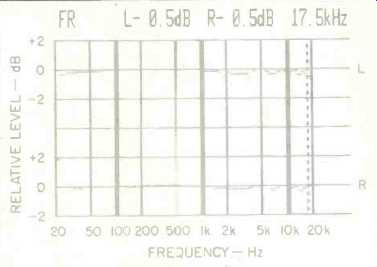
Fig. 1--Frequency response, left (top) and right channels.

Fig. 2--THD vs. frequency at levels of 0, -24, and -30 dB (see text).
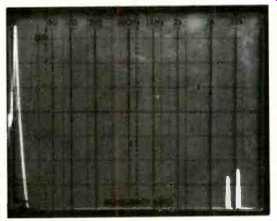
Fig. 3--Outputs from Micro Seiki CD-M1 contained spurious high-frequency
signals at around 44.1 kHz, the D/A sampling frequency.
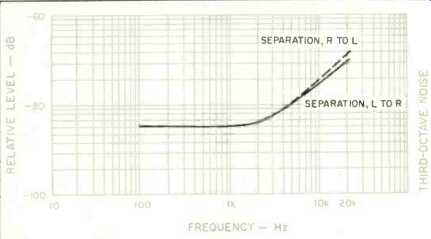
Fig. 4--Channel separation vs. frequency.

Fig. 5--Third-octave analysis of S/N.
Major operating buttons are located to the right of the displays. Included are seven touch buttons for "Play/Start," "Stop/Eject," "Pause," reverse and forward skip, reverse, and fast forward. The reverse and forward skip buttons move the laser pickup either to the beginning of the current track or to the beginning of the following one. A set of keys numbered from "0" to "9" to the right of the operating buttons is used to program desired program or index numbers and/or track starting times. A "Memory" button, used to enter track or index numbers during programming, and a "C/AC" (Clear/All Clear) button are to the left and right, respectively, of the "0" key. When the "C/AC" button is touched once, it clears an error you may have made during programming. Touched twice in succession, the button clears or erases all programmed entries from memory.
Six small buttons in a vertical row at the right of the front panel take care of the remaining functions. Included here are a "Phrase" button for initiating repeat-play of a desired musical phrase, an "Index" button for selecting desired index points, a "Time" button for programming by starting time rather than by track or index number, a "Memo Call" button for visually reviewing memory content in the order in which it was programmed, a "Repeat" button for repeat playing of any given track, and a "Total Time" button for viewing total time since the beginning of the disc's first track.
On the rear panel of the CD-M1, in addition to the usual left and right output jacks, there is an output-level control which adjusts left and right channel simultaneously.
Operation of the player, for all its programming features, is relatively simple. I particularly liked the fact that the disc compartment door did not "swallow" or "grab" discs when I inserted them. It is necessary to push the disc all the way down until a click is heard, and then to close the door manually. While the self-closing doors on some machines are elegant to watch, I always have the feeling (probably unjustified) that some day the door will close before the disc is properly positioned, with disastrous consequences for both disc and player. Retaining a certain amount of control over the mechanism is, to my mind, somewhat reassuring.
Measurements
Figure 1 is a plot of frequency response for both left and right channels of this CD player. The vertical scale is expanded to 2 dB per division, and the plot is from 20 Hz to 20 kHz. At 17.5 kHz, response was down about 0.5 dB on both channels; at 20 kHz, response was down 0.8 dB from the 1-kHz reference level.
Harmonic distortion for maximum recorded level measured a very low 0.003% at mid-frequencies, rising to 0.005% at the lowest test frequency of 41 Hz. Note that in Fig. 2, I was unable to provide a meaningful plot of distortion above 10 kHz. That is because some spurious super-audible components, centered around 44.1 kHz (the sampling frequency used for CDs), were present at the outputs of the player. The presence of these unwanted frequencies is illustrated in the spectrum analyzer sweep shown in Fig. 3.
In this display, sweep was linear from 0 Hz to 50 kHz, rather than logarithmic, and you can see two distinct spurious spikes at around 43 and 45 kHz, near the right edge of the screen. The tall spike at the left is, of course, the desired 1 kHz test signal present on the test disc. While the unwanted high-frequency signals cannot be heard during playback of a CD, they nevertheless influence any attempts to read harmonic distortion for high-frequency signals. (For THD readings below 10 kHz, I used a band-pass filter so as to reduce or eliminate the effects caused by these spurious high-frequency signals.) Output linearity was accurate to within 0.3 dB from 0-dB reference level down to 75 dB. Stereo separation is plotted for left and right channels in the graph of Fig. 4. I measured separations of around 85 dB at mid-frequencies and approximately 75 dB at 10 kHz.
SMPTE intermodulation distortion measured a negligibly low 0 0025% at maximum recorded output level, increasing to 0.02% at-20 dB recorded level. Signal-to-noise ratio readings were also difficult to perform using a single-meter method because of the presence of those spurious high frequency signals at the outputs of the player. Using an a.c. VTVM, I read an S/N of only 85 dB, unweighted, and 86 dB, A-weighted. Yet, when I measured S/N using my Sound Technology 1500A tester, which limits its analysis of noise to the audio band only (from 20 Hz to 20 kHz), the S/N reading, as shown in Fig. 5, was a superb 102 dB, unweighted.
Examination of a reproduced 1-kHz square wave (Fig. 6) revealed that the Micro Seiki CD player employs digital filtering and oversampling, similar to that employed by Philips in the players that are sold under the Magnavox name in this country. Micro Seiki claims that, unlike Philips and others who employ oversampling, they are actually using 16-bit D/A converters rather than 14-bit D/As. In addition to digital filtering, "soft" analog filtering is used in post-D/A circuitry. The appearance of the recovered unit-pulse test signal (Fig. 7) confirms that this circuit approach is being used, and the excellent phase relationship between the low (2 kHz) and high (20 kHz) signals of Fig. 8 offers further confirmation of this circuit approach.
The usual error-correction and tracking tests were made, using a Philips test disc, to see how well the player could handle simulated scratches, dust particles, and fingerprint smudges on the surface of a CD. The player successfully tracked the scratch-simulation opaque wedge up to the 900-micron width. This is about average for the players I have tested to date. As for the simulated dust particles (black dots of increasing diameters), the CD-M1 did not do quite as well, audibly muting when trying to traverse a dust spot of only 600 microns. This is well below average compared with other machines previously tested. As for the simulated fingerprint smudge, the player had no trouble playing through it, nor have any of the other players tested been tripped up by this simulated defect in the test record's surface.
Use and Listening Tests
The Micro Seiki CD-M1 performed flawlessly in terms of programming facilities and in terms of sound quality. Now that my software library has expanded to include a good deal of well-recorded classical fare (and even a bit of beautifully engineered and recorded jazz material), I must confess that I am beginning to be able to differentiate between the sounds of various CD players. Yes, there are sonic differences, however subtle they may be. In my opinion, the Micro Seiki circuit approach to decoding and playing CDs is a good one, and I believe that in future months and years we will see an increasing number of manufacturers turning to the digital filtering/oversampling approach already employed by Micro Seiki and others. I certainly don't mean to imply that those manufacturers using steep analog filters are producing inferior-sounding machines. I still maintain that all CD players I have tested, given decent software, offer tremendous advantages over even the best analog recordings and analog audio systems. It's just that those of you who are very critical listeners may be able to distinguish between the sounds of various CD players and, like me and many of my colleagues, may prefer the kind of sound reproduction offered by players such as this Micro Seiki unit.

Fig. 6--Reproduction of 1-kHz square wave.
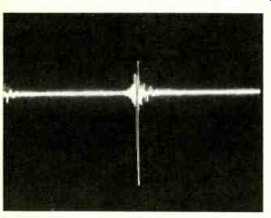
Fig. 7--Single-pulse test.
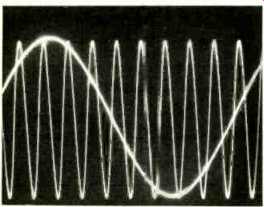
Fig. 8--Phase linearity test, 2and 20-kHz signals.
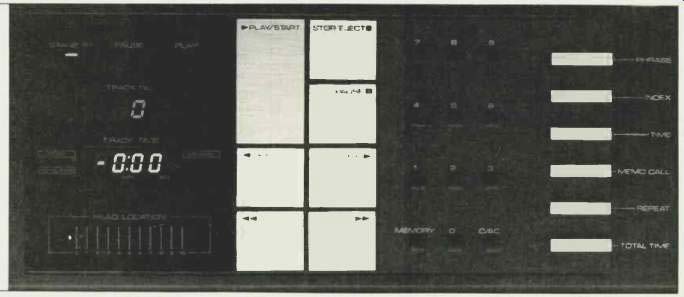
The feature-laden CD-M1 can access up to 24 selections-by time,
track or index point.
Are there any negatives concerning the CD-M1? Yes, one or two. For one thing, it is not as shock-resistant as some other players I have tested. You don't want to bang your fist on its surface, or even on the table or shelf on which it stands while it is playing a CD. For another, at its suggested retail price, I rather wish that it had provisions for a remote control unit (preferably wireless), even if the remote were an option at added cost. Especially with pop CDs, there's so much music on a single disc that I often find myself wanting to skip ahead when I listen to a disc for the first time and haven't yet programmed it to play specific tracks. To most listeners, these minor deficiencies may not even be regarded as substantive. The fact is that the Micro Seiki CD-M1 looks good, sounds good, and works well.
-Leonard Feldman
(Source: Audio magazine, June 1984)
Also see: MISSION PCM-7000 Compact Disc Player (Aug. 1987)
= = = =